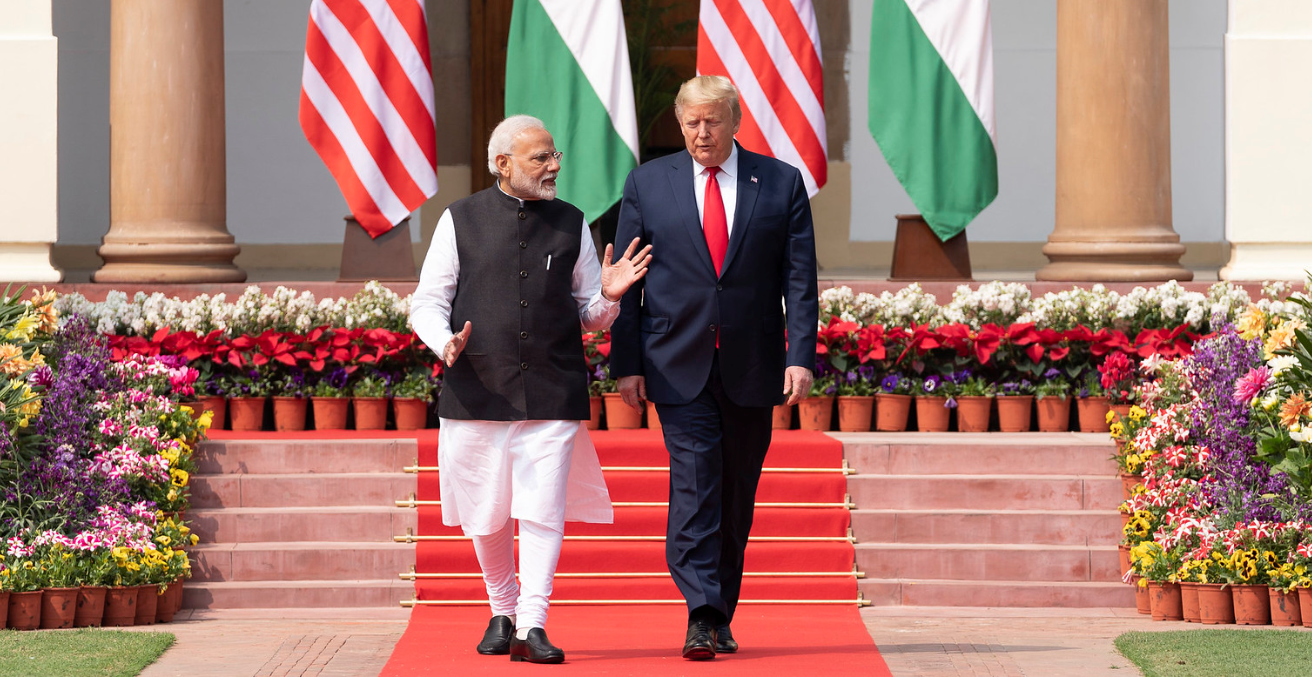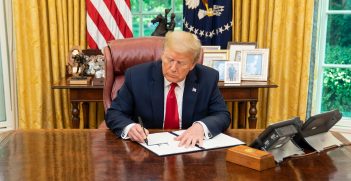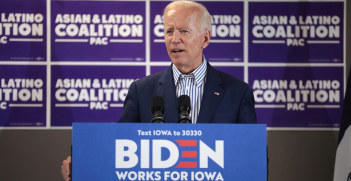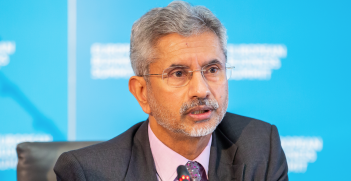Trump Meets Modi

Trump’s visit to India is characterised by close personal and strategic relations, as well as ongoing trade concerns. This is the paradoxical nature of current India-US relations.
President Donald Trump visited India on 24 and 25 February. This was his first overseas trip in the third decade of the 21st century and his first trip to India as president. 2020 also marks the 20th anniversary of former Indian Prime Minister Vajpayee’s historic visit to Washington, during which he called India and US “natural allies.” The relationship between the two countries has come a long way since then.
The expectation from this trip was very high. India and the US are strategic partners. India is the world’s largest democracy and the US is the oldest. As of 2015, there were 2.4 million Indian immigrants residing in the US. This makes Indians the second-largest immigrant group in the US after Mexicans, accounting for almost 6 percent of the 43.3 million foreign-born Americans.
Overall, Indian immigrants have much higher educational attainment compared to the broader foreign- and US-born populations. In 2015, 77 percent of Indian adults (ages 25 and over) had a bachelor’s degree or higher, compared to 29 percent of all immigrants and 31 percent of native-born adults. Notably, among college-educated Indian immigrants, more than half had an advanced degree. The median household income for Indian immigrants in 2015 was much higher than that of the overall foreign- and native-born populations. Households headed by Indian immigrants had a median income of USD 107,000, compared to $51,000 and $56,000 for overall immigrant and native-born households, respectively. Thus, Indian immigrants constitute a significant political constituency and hold positions of authority in politics and the wider economy. Wooing their support forms an important component of Trump’s re-election strategy.
US-India bilateral trade was estimated at $142.6 billion in 2018. Indian exports to the US were $83.9 billion, whereas US exports to India were worth $58.7 billion. India’s trade surplus with the US started diminishing after India started buying more oil, natural gas, coal, drones, and aircraft from the US. Some of these imports grew sharply after India stopped buying petroleum products from Iran after the imposition of US sanctions. US foreign direct investment (FDI) in India (stock) was $46 billion in 2018, a 3.4% increase from 2017. India’s FDI in the United States (stock) was $9.6 billion in 2018, down 2% from 2017.
Impressive as these figures are, they do not provide a complete account of the extent of India-US engagement. There is a strong convergence between the two countries on major international issues, particularly those in the Indo-Pacific region, as well as on combating terrorism. US-India technological cooperation is at a very high level and the US has made exceptions for India when signing major agreements, such as the US-India Civil Nuclear Agreement. In June 2016, the US designated India a “Major Defence Partner,” intending to elevate defence trade and technology sharing with New Delhi to a level commensurate with that of its closest allies and partners.
The Trump visit comes at a time when the personal relationship between Prime Minister Narendra Modi and Trump is very cordial. There is near congruence between the two countries on strategic matters, although there are some frictions in the area of trade relations. The two-day visit by President Trump is viewed as a point of inflection in the bilateral relations between the two countries because it holds potential of providing a qualitatively decisive impetus to these relations.
However, on the trade front, the two countries are facing some issues. Ever since the US imposed tariffs on imports of aluminium and steel, trade relations between the two countries have become difficult. The removal of India from the list of countries availing Generalized Scheme of Preferences (GSP) benefits, which allowed many imports, particularly labour-intensive manufactured goods, from India duty free entry into the US, has led to trade tensions. Trump has reduced the issuance of H1B visas to Indian techies, arguing that hiring foreign employees takes jobs from Americans. Trump has objected to India’s tariff policy for the importation of agricultural products and Harley-Davidson motorcycles from the US. Indeed, Trump has gone to the extent of calling India “the king of tariffs.” Clearly, trade tensions are high even though the strategic relations between the two countries and the personal relations between the two leaders are at unprecedented levels.
Although both Trump and Modi had expressed optimism that a trade treaty would be signed during Trump’s visit, it comes as no surprise that no such treaty was signed. At best, one could have hoped for the signing of the first phase of a treaty similar to what was achieved between US and China. Both India and the US have accepted that a grand deal will have to wait – perhaps until after the US presidential election in November. However, during Trump’s visit, the broad contours of a comprehensive trade deal were agreed to by trade representatives from the two sides. It is expected that talks between the trade representatives will continue to give legal shape to the agreements reached between Modi and Trump.
Press reports from India indicate that India is willing to allow market access to some agricultural products (cranberries, blueberries, pecans, and avocados) as well as to the dried distilled grains, a by-product of ethanol production used in animal feed, and alfalfa hay, a plant used for fodder. India has also agreed to cut import duties for Harley-Davidson motorcycles by creating a separate tariff classification for them. It is not immediately clear what trade proposals the US has advanced in response. The US response will be keenly watched since, according to Trump, “Modi is a tough negotiator.”
Substantial agreement was reached in the area of arms sales to India. India and the US finalised defence deals worth $3 billion under which India will procure 30 military helicopters–six AH-64 Apache and 24 MH-60 Romeo helicopters– from two US defence majors for the Indian armed forces. The announcement on the deals was made by Trump after his wide-ranging talks with Modi. These helicopters will provide a strong boost to the Indian navy, especially its capacity to maintain peace, stability, and the rule of law in the Indo-Pacific. This is an area of immense strategic interest to the US, as well as to the other two members of the Quad – Australia and Japan.
Another area in which a significant agreement was reached is energy partnership. In particular, Indian Oil Corporation and Exxon Corporation signed a deal to deliver natural gas in cylinders to towns outside the gas network. Viewed together with India’s increasing purchase of petroleum products from the US, this step represents a quantum increase in the India-US energy partnership.
In sum, Trump’s India visit represents a reinvigoration of one of the major partnerships of the 21st century. The personal chemistry between the two leaders, Modi and Trump, was evident in the massive Namaste India Event in Ahmedabad on 24 February. Other more personal visits were also very significant, including the visit by the president and the first lady to Sabarmati Ashram of Mahatma Gandhi, Raj Ghat (memorial to Gandhi), and the Taj Mahal, and the first lady’s visit to a government school in New Delhi to observe “happiness classes” for children. Significant agreement was reached on India-US strategic, military, and energy cooperation. There is an expectation that a comprehensive trade and investment deal will be forthcoming in the ensuing months. Trump’s Delhi visit was perhaps more successful than initially anticipated.
Professor Raghbendra Jha is with the Arndt-Corden Department of Economics, College of Asia and the Pacific, Australian National University.
This article is published under a Creative Commons Licence and may be republished with attribution.





